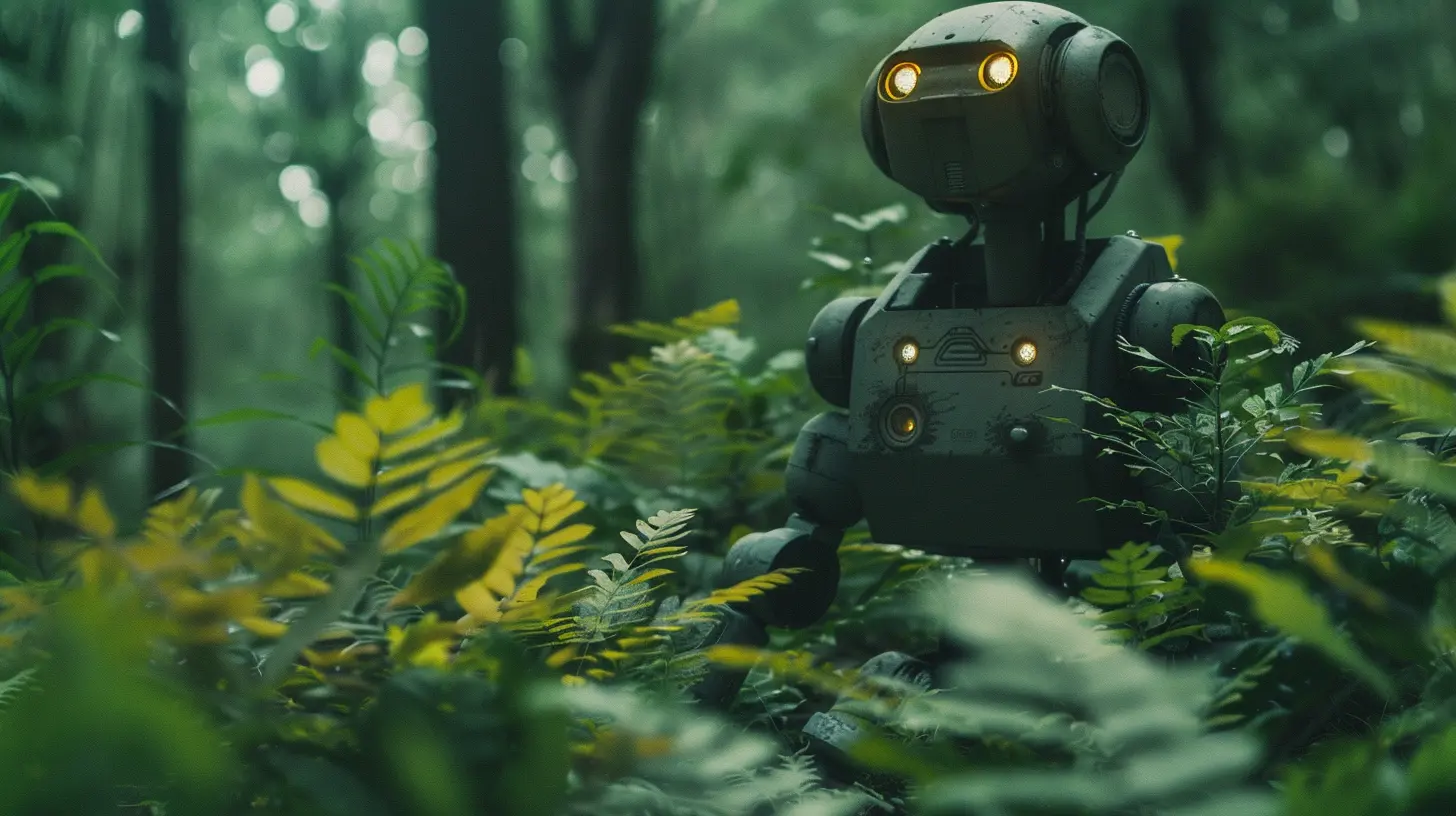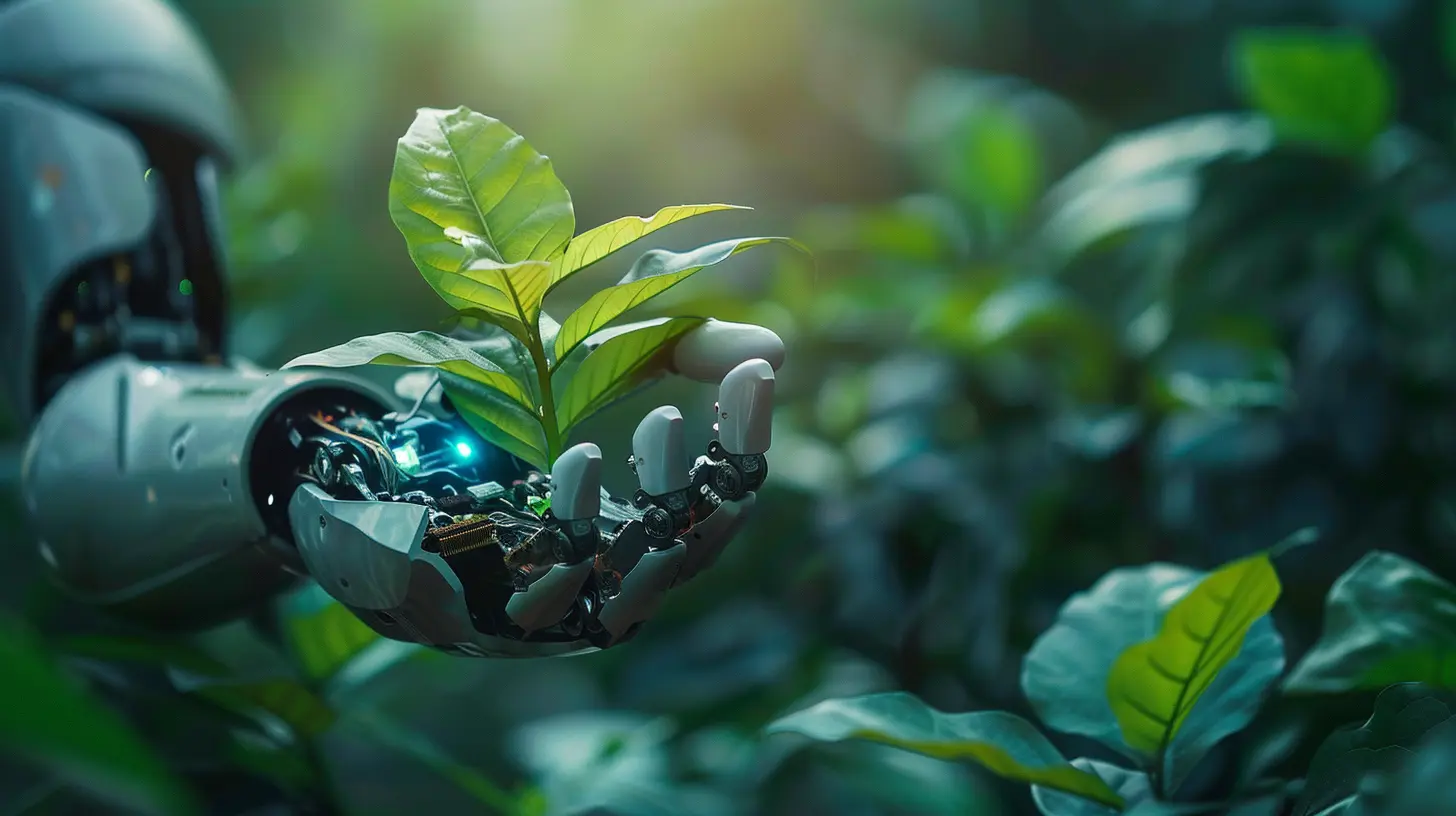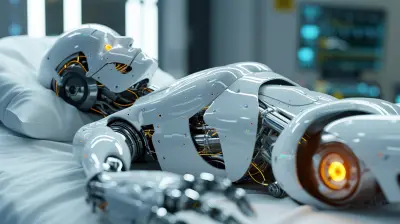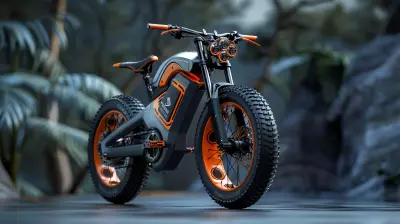The Role of Robotics in Environmental Conservation
13 March 2025
When you think of robots, maybe you picture futuristic cities, self-driving cars, or even sci-fi movies where machines take over the world. But what if I told you that robots are stepping up as Earth’s newest eco-warriors? Yep, robots are no longer just confined to factories or home vacuums. They’re being deployed in some of the most critical environmental conservation efforts today. From cleaning up oceans to planting trees, robotics is quickly becoming a game-changer in the fight to save our planet.
In this article, we’ll dive into how robotics is playing a crucial role in environmental conservation, the challenges these technologies face, and what the future holds. Spoiler alert: It’s looking pretty promising!

Why Robotics? The Growing Need for Technological Solutions
Before we get into the nitty-gritty of how robots are helping out, let’s address the elephant in the room: Why are we even turning to robots for environmental conservation?The truth is, we’re facing some massive environmental challenges, like climate change, deforestation, pollution, and habitat destruction. And while humans have been trying to tackle these issues, we’re not exactly winning the race. It turns out that some tasks are either too dangerous, too time-consuming, or just too massive for humans to handle alone.
That’s where robots come in. Unlike humans, robots don’t get tired, they don’t need breaks, and they can operate in extreme conditions that would be risky for us. Plus, they can do things with a level of precision and efficiency that we simply can’t match. In short, robots are not just helpful—they’re absolutely essential if we want to make a real impact on environmental conservation.

How Robots Are Cleaning Up Our Oceans
Let’s start with one of the world’s most pressing environmental issues: ocean pollution. Our oceans are filled with about 8 million tons of plastic every year. It’s a staggering number, and the consequences are devastating for marine life. Enter robotic solutions like the Ocean Cleanup Project, which uses autonomous systems to gather and remove plastic from the ocean.These robots, often in the form of floating systems, are designed to collect plastic waste from the water's surface and prevent it from reaching deeper into the seas. Some robots can even filter microplastics, a form of pollution that’s nearly impossible for humans to collect manually.
Another cool example is Aquatic Drones, also known as "SeaVacs" or "TrashBots," which can navigate the waters autonomously to pick up garbage, oil spills, and other pollutants. These drones can cover vast areas of the ocean, and they don’t need to clock out after an 8-hour shift!
Without these robotic systems, the sheer amount of plastic in the ocean would be nearly impossible for humans to clean up. Robots are giving us a fighting chance to restore our oceans and protect marine ecosystems.
Robots to the Rescue: Examples in Action
Here are some amazing robotic innovations designed specifically to clean up our oceans:- The WasteShark: This drone operates like a vacuum cleaner for the ocean, collecting floating debris, oils, and algae.
- Jellyfishbot: This small, efficient robot can navigate through narrow spaces, such as marinas, to clean up waste.
- Slocum Glider: An autonomous underwater vehicle (AUV) that can collect data and monitor ocean health while also identifying polluted areas.

Reforesting the Planet with Tree-Planting Robots
Now, let’s head to land. Deforestation is another massive problem. We’re losing forests at a rate of about 10 million hectares per year. That’s roughly the size of South Korea disappearing annually! And forests are vital not just for biodiversity, but for absorbing carbon dioxide and producing oxygen.Planting millions of trees by hand is a noble effort, but it’s incredibly time-consuming and labor-intensive. Enter Tree-Planting Drones! These aerial robots can plant trees at 10 times the rate of a human, and at a fraction of the cost.
One company leading the charge is BioCarbon Engineering. Their drones can plant thousands of trees in a single day by shooting seed pods into the soil. These robots are equipped with sensors that allow them to identify the best planting spots, ensuring that the seeds have the highest chance of survival.
With the help of these robots, we could potentially restore entire forests in just a few years—something that would take decades if done by hand.
How Tree-Planting Robots Work
- Aerial Surveying: Drones first fly over an area to create a 3D map.- Seed Pod Planting: The drones then fire seed pods into the ground, ensuring that they’re placed in optimal locations.
- Monitoring and Maintenance: These robots can also return to the site to monitor the growth of the trees and make adjustments as needed.

Monitoring Wildlife and Protecting Endangered Species
Conservation isn’t just about cleaning up pollution or planting trees. It’s also about protecting wildlife, especially endangered species. Traditional methods of monitoring animals, like tracking collars or camera traps, can be invasive and often ineffective. Not to mention, it’s hard to cover large areas of land without a huge team of people.Robots, on the other hand, offer a non-invasive solution. Drones equipped with cameras and sensors can keep a close eye on wildlife without disturbing the animals. They can cover large areas of land and provide real-time data on animal behavior, population sizes, and habitat use.
For instance, in Africa, drones are being used to monitor elephant migrations and detect poaching activities. By flying over vast areas of wilderness, these drones can alert park rangers to illegal activities before they escalate.
In addition to drones, robotic camera traps are being used to photograph and monitor endangered species in remote locations. These cameras can operate autonomously for months, collecting invaluable data for conservationists.
Robotics Innovations in Wildlife Protection
- RangerBots: These autonomous drones can monitor wildlife, detect illegal fishing activities, and even identify coral bleaching in real-time.- RoboBees: Tiny robotic insects capable of pollinating flowers, mimicking the work of real bees which are currently facing population declines.
- Wildlife Surveillance Drones: These drones help track poaching, monitor endangered species, and assist in conservation efforts by providing real-time data to researchers.
Tackling Climate Change with Data-Collecting Robots
Climate change is arguably the biggest environmental challenge of our time. To fight it effectively, we need tons of data—data on temperature changes, sea level rises, carbon emissions, and more. And guess who’s really good at collecting data? You guessed it, robots!Autonomous underwater vehicles (AUVs) and unmanned aerial vehicles (UAVs) are being used to gather data in places where it’s difficult or dangerous for humans to go, like the Arctic or deep-sea environments. These robots can measure water temperatures, ice thickness, and even monitor carbon dioxide levels in the atmosphere.
With the help of these robots, scientists are gaining a much better understanding of how climate change is progressing and what steps we need to take to mitigate its effects.
Robots at the Forefront of Climate Research
- Slocum Glider: This underwater robot can travel thousands of miles collecting data on ocean temperatures and currents.- Arctic Drones: These UAVs can fly over the polar regions, collecting data on ice melting and sea level rise.
- Carbon Monitoring Robots: These robots are designed to measure and track carbon dioxide levels in both the atmosphere and oceans, helping us keep tabs on greenhouse gas emissions.
The Challenges Robots Face in Environmental Conservation
As amazing as all of this sounds, robotics in environmental conservation isn’t without its challenges. For starters, these technologies can be expensive to develop and deploy on a large scale. While the costs are coming down, it’s still not cheap to build, maintain, and operate these robots.There’s also the issue of energy consumption. Many robots rely on traditional power sources like batteries, which need to be recharged frequently. If we’re trying to reduce our carbon footprint, relying on non-renewable energy sources for these robots might seem counterproductive.
Lastly, there’s the question of scalability. While robots are doing incredible work in pilot projects, we need to get these systems up and running on a global scale if we want to make a real difference. This requires not just technological advancements, but also political will and international cooperation.
The Future of Robotics in Environmental Conservation
Despite these challenges, the future of robotics in environmental conservation looks incredibly bright. As technology continues to advance, robots will become more efficient, more affordable, and more accessible. We’re already seeing robots that can operate without human intervention for months at a time, using solar power or kinetic energy to recharge themselves.In the near future, we could see swarms of robots working together to tackle big problems like deforestation, ocean pollution, and climate change. Imagine a world where robots are planting millions of trees, cleaning up the oceans, and monitoring endangered species—all while we focus on creating sustainable policies and practices.
Robots won’t replace humans in the fight to save the planet, but they’re certainly going to be invaluable partners. And who knows? Maybe one day, when future generations look back, they’ll see that the robots were the unsung heroes of environmental conservation.
all images in this post were generated using AI tools
Category:
RoboticsAuthor:

Marcus Gray
Discussion
rate this article
15 comments
Mackenzie Phelps
This article beautifully highlights the potential of robotics in environmental conservation. It's inspiring to see how technology can work hand-in-hand with nature. I’m hopeful that continued innovation will lead to effective solutions for our planet's challenges. Thank you for sharing these insights!
April 8, 2025 at 12:05 PM

Marcus Gray
Thank you for your kind words! I'm glad you found the article inspiring. Together, we can harness technology for a healthier planet.
Vincent McWilliams
Robots saving the planet? Finally, my vacuum and I can agree on one thing—cleaning up our messes!
April 7, 2025 at 6:27 PM

Marcus Gray
Haha, exactly! Robots are proving to be valuable allies in our quest for a cleaner, more sustainable planet.
Natalie Sanders
Robotics offers innovative solutions for environmental conservation, from monitoring wildlife populations to managing waste. By leveraging drones, AI, and automated systems, we can enhance data collection and improve efficiency in conservation efforts, ultimately leading to more effective strategies for protecting our planet's ecosystems.
April 6, 2025 at 8:38 PM

Marcus Gray
Thank you for your insightful comment! Indeed, robotics plays a crucial role in advancing conservation efforts, enhancing our ability to monitor and protect ecosystems more effectively.
Caden McKinnon
Great insights! Robotics indeed holds immense potential for enhancing environmental conservation efforts worldwide.
April 4, 2025 at 8:59 PM

Marcus Gray
Thank you! I'm glad you found the insights valuable—robotics truly can play a transformative role in conservation.
Clara Yates
Robotics is paving the way for a greener future! By embracing technology, we can enhance conservation efforts, protect our planet, and inspire innovation for sustainable solutions. Let’s innovate!
April 2, 2025 at 7:01 PM

Marcus Gray
Thank you for your insightful comment! I completely agree that robotics can significantly enhance our environmental conservation efforts and inspire innovative solutions for a sustainable future.
Wren McGuire
In nature's embrace, robotics take flight, Cleansing our Earth with precision and might. Guardians of green, they nurture and heal, A future revealed in their seamless zeal.
March 26, 2025 at 8:49 PM

Marcus Gray
Thank you for your poetic reflection! I'm glad you captured the essence of robotics in environmental conservation. Their potential to enhance sustainability is truly inspiring.
Seraphine McFee
Who knew our future eco-warriors would be made of metal? If robots can save trees and whales, I’ll gladly trade my green thumb for a robotic sidekick—leaf-blower attachment optional!
March 26, 2025 at 3:20 AM

Marcus Gray
Absolutely! Robots can enhance our conservation efforts, making them powerful allies in protecting nature. Your robotic sidekick could definitely make a positive impact!
Sable Lopez
Robots saving the planet? Talk about a plot twist! If they can outsmart humans in eco-friendly efforts, maybe it's time to hand over the reins—literally!
March 25, 2025 at 3:28 AM

Marcus Gray
Absolutely! It's fascinating to think how robots can enhance our eco-friendly initiatives and lead us towards a more sustainable future. Embracing technology could be key to solving environmental challenges.
Wyatt McDonough
Great insights! Robotics truly holds the potential to revolutionize environmental conservation and protect our planet effectively.
March 20, 2025 at 7:56 PM

Marcus Gray
Thank you! I'm glad you found the insights valuable—robotics indeed has immense potential to drive positive change in environmental conservation.
Colt Hodge
Robotics plays a pivotal role in environmental conservation by enhancing efficiency and precision in tasks like wildlife monitoring, pollution cleanup, and habitat restoration. By deploying drones for reforestation and robots for waste management, we can significantly reduce human impact on ecosystems, promoting a more sustainable future. Great insights in this article!
March 20, 2025 at 12:35 PM

Marcus Gray
Thank you for your thoughtful comment! I'm glad you found the insights on robotics in environmental conservation valuable.
Paula Forbes
Robotics significantly enhances environmental conservation efforts through precision monitoring, habitat restoration, and pollution control. By utilizing advanced technologies, robots can efficiently tackle complex ecological challenges and promote sustainability.
March 19, 2025 at 12:58 PM

Marcus Gray
Thank you for your insightful comment! I completely agree—robotics plays a crucial role in enhancing our conservation efforts and addressing ecological challenges effectively.
Phaedra McAuley
Who knew robots could be the ultimate eco-warriors? 🌍🤖 From planting trees to cleaning oceans, these metal marvels are proving that saving the planet doesn’t have to be all work and no play! Let’s give a round of applause for our robotic friends!
March 19, 2025 at 5:41 AM

Marcus Gray
Absolutely! Robots are revolutionizing conservation efforts, making a significant impact while adding a fun twist to environmental protection. 🌱👏
James Ortiz
Robots saving the planet—high five!
March 18, 2025 at 1:34 PM

Marcus Gray
Thanks! Excited about the potential of robotics to make a positive impact on our planet!
Cecilia Snyder
Insightful read! Robotics truly enhance conservation efforts.
March 16, 2025 at 7:58 PM

Marcus Gray
Thank you! I'm glad you found it insightful. Robotics indeed play a crucial role in enhancing conservation efforts.
Sophie Elliott
This article highlights the transformative impact of robotics in environmental conservation, showcasing innovative applications that enhance monitoring, preservation, and restoration efforts for our planet's ecosystems.
March 14, 2025 at 5:50 AM

Marcus Gray
Thank you for your insightful comment! I'm glad you found the article highlights on robotics in environmental conservation valuable.
MORE POSTS

Enhancing iPhone Photography: Must-Have Camera Accessories

The Future of Autonomous Robots in Healthcare

The Role of Cloud Computing in Sustainable IT Practices
How Wearable Health Devices Are Redefining Fitness Tracking

Gadgets That Bring the Cinema Experience to Your Living Room

Exploring the Next Wave of AI-Powered Gadgets

Voice Assistants vs. Privacy: Balancing Convenience and Security

The Most Exciting Tech Gadgets for Music Lovers

How to Build Scalable Back-End Architectures for High-Traffic Applications

The Best E-Bike Accessories to Enhance Your Riding Experience